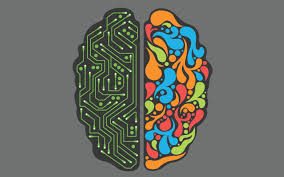
Years of analyzing popular but dubious claims leads to the impression that just about all knowledge that filters down to the popular consciousness is essentially wrong, at least as a first approximation. This may sound cynical, but think about any area in which you have specialized knowledge and compare that to what the average person believes about that area. Now extrapolate that to every other area of specialized knowledge.
I may be skeptical, but I am not a nihilist. I do think the situation can be and is being improved by popularizing science and other areas of knowledge. Experts need to be directly involved in teaching the public about their area, and when they are, popular beliefs can be corrected.
One example is the myth that we only use 10% of our brain. This is still fairly popular, and was recently a central plot element to the blockbuster movie, Lucy. However, Google “10% brain” and you will find nothing but links to sites debunking this myth, at least in the first few pages.
Another popular but baseless myth is the notion that people are either dominantly left-brained or right-brained in their personality and cognitive style. Google “left brain right brain” and you get more of a mix of credulous sites, like this personality testing site, which states:
We go through life attached to a lot of personality-related labels – introverted, optimistic, strong but silent, drama queen, etc. But left-brain or right-brain? These are not so well-known. Interestingly however, whether it is our left hemisphere that is more dominant or our right one, the distinction can impact our personality and the decisions we make. For example, left-brain people are more organized and systematic. Right-brain people are more creative and intuitive. So which side of your brain do you wake up on in the morning? Find out with this test!
Popular culture seems to latch onto ideas that are sexy or meet some psychological need. The idea that we only use 10% of our brains means we have massive untapped potential. The left brain-right brain thing feeds into our fascination with ourselves and the feeling of control and understanding we get by attaching simple, all-encompassing labels to people.
A recent study directly addresses the question of whether or not there is a neurological basis to hemisphere-dominant cognitive styles, but before we review the study let’s go through a little background on the brain.
It is certainly true that the brain is divided into two hemispheres, right and left. These hemispheres also carry out some different tasks. Specific cognitive abilities localize in one of three basic patterns. They can be bilateral or diffuse, so they do not localize to one hemisphere. Much of what our frontal lobes do, such as attention, are bilaterally redundant in this fashion.
Other abilities localize to both hemispheres for the opposite side. For example, each hemisphere processes vision for the opposite side of the universe.
Still other abilities are localized and lateralize to one hemisphere. For left-hemisphere-dominant people (which is most people) language and math localize to the left hemisphere, while music and visual-spatial processing localize to the right hemisphere. It is this fact which seems to have led to the right brain-left brain idea.
However, just because there are specific abilities that localize to a specific part of the brain in one hemisphere, that does not mean that our general personality or cognitive style also localizes to one hemisphere or displays hemispheric dominance. Many basic cognitive functions just don’t localize in this way.
Further, the two hemispheres have massive interconnectedness. The corpus callosum, for example, is a thick cable running between the two hemispheres, and there are other, smaller cables. There are many networks in the brain that span the two hemispheres. Both sides of our brain work together seamlessly to produce one consciousness.
There is no significant basis in neuroscience for the hypothesis that people have hemisphere-dominant cognitive styles. This is just a popular made-up myth. I could only find one psychology researcher, Morton, supporting this notion in the published literature, calling the phenomenon “hemisity.”
If we take “hemisity” as a serious proposal, what does the evidence show?
A 2013 study directly addressed this question with functional MRI scanning of different subjects.
Lateralization of brain connections appears to be a local rather than global property of brain networks, and our data are not consistent with a whole-brain phenotype of greater “left-brained” or greater “right-brained” network strength across individuals. Small increases in lateralization with age were seen, but no differences in gender were observed.
What they found when they looked at thousands of regions in the brain is that there were localized hubs of activity associated with specific tasks, but no global pattern of hemisphere dominance. Despite Morton’s claims and popular belief that people sort into a binary system of left- or right-brained, looking at brain activity did not support this claim.
Conclusion
Another popular myth bites the dust. The notion that people are dominantly left- or right-brained never had a solid foundation in neuroscience, and now the best evidence we have is convincingly negative.
As myths go, this one is fairly benign, but not completely. Any time our understanding of the world is muddied with simplistic and incorrect notions, there is the potential for mischief. In this case, attempting to pigeonhole with a false binary label can be extremely counterproductive in interpersonal relationships and especially psychology.
Such notions also are sometime applied to education with the belief that children have different learning styles that need to be catered to. This also does not appear to be true.
Labeling people as left or right brained is no better than approaching people according to their astrological sign or blood type, except that it has the patina of neuroscience that may cause some otherwise-rational people to take the idea seriously.

